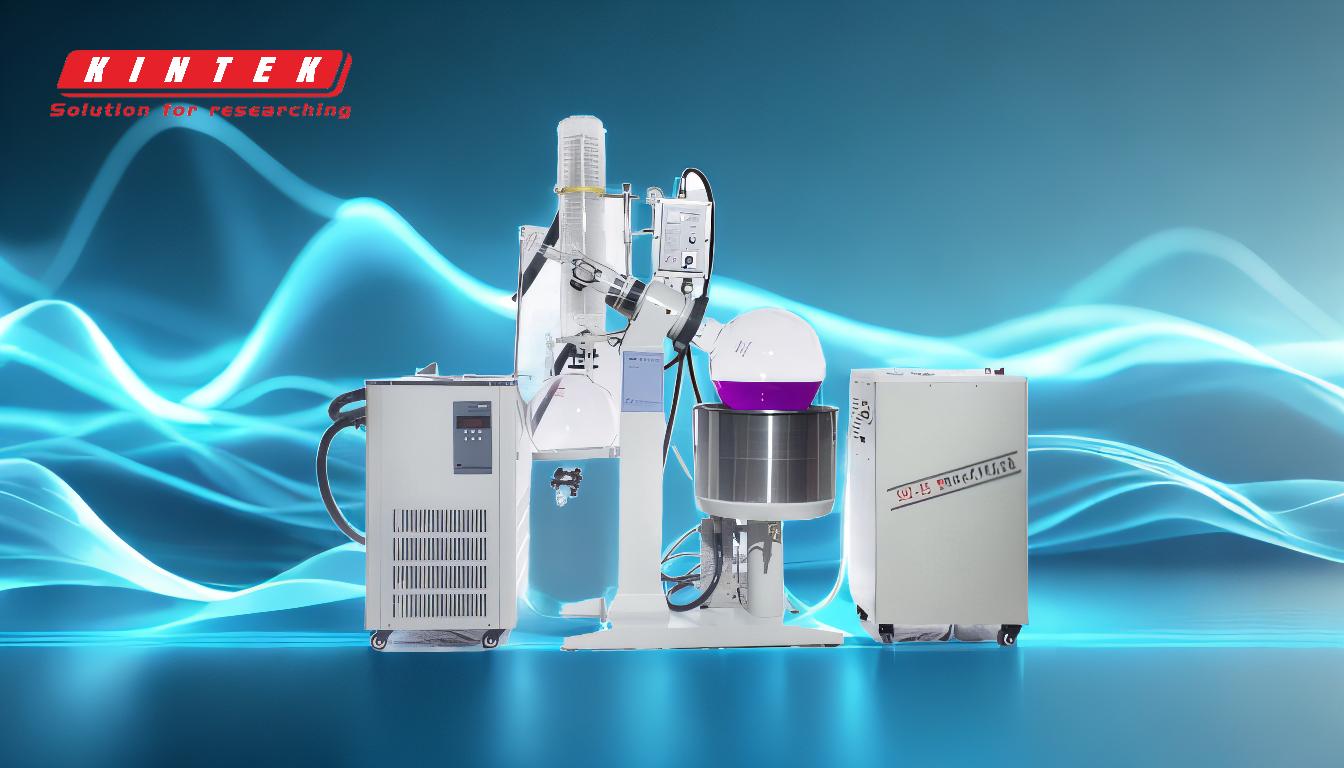A vacuum rotary evaporator is a laboratory device used to efficiently remove solvents from samples through evaporation under reduced pressure. It works by rotating a flask containing the sample in a heated water or oil bath while applying a vacuum. The rotation increases the surface area of the sample, promoting faster evaporation, while the vacuum lowers the boiling point of the solvent, allowing it to evaporate at lower temperatures. The evaporated solvent is then condensed on a cooled surface and collected in a separate flask. This process is widely used in chemistry and biochemistry for gentle and efficient solvent removal.
Key Points Explained:

-
Basic Components and Setup:
- Evaporation Flask: Holds the sample and rotates to increase the surface area for evaporation.
- Water/Oil Bath: Provides controlled heating to the flask, ensuring uniform temperature.
- Vacuum System: Reduces pressure inside the system, lowering the boiling point of the solvent.
- Condenser: Cools the solvent vapor, converting it back into liquid for collection.
- Collection Flask: Stores the condensed solvent after evaporation.
-
Working Principle:
- The rotary evaporator operates by creating a vacuum environment in the rotating flask, which reduces the boiling point of the solvent. This allows the solvent to evaporate at lower temperatures, minimizing the risk of degrading heat-sensitive samples.
- The rotation of the flask ensures that the sample forms a thin, uniform film on the inner surface, maximizing the evaporation area and speeding up the process.
- The solvent vapor is then condensed on a cooled surface (usually a glass condenser) and collected in a separate flask for reuse or disposal.
-
Operation Steps:
- Step 1: Setup: Secure the sample flask to the rotary evaporator and ensure all connections are airtight. Place the flask in the water or oil bath.
- Step 2: Rotation: Start rotating the flask at a speed appropriate for the sample volume. This creates a thin film of the sample on the flask wall, enhancing evaporation.
- Step 3: Vacuum Application: Gradually apply a vacuum to the system. Monitor the process to ensure the solvent evaporates smoothly without excessive bubbling.
- Step 4: Heating: Turn on the water or oil bath to provide heat, which accelerates evaporation. Adjust the temperature and vacuum strength as needed.
- Step 5: Condensation and Collection: The solvent vapor is condensed in the glass condenser and collected in the recovery flask.
- Step 6: Completion: Once all the solvent has evaporated, turn off the vacuum, stop the rotation, and return the system to atmospheric pressure. Remove the flask with the concentrated sample.
-
Key Parameters:
- Rotation Speed: Typically between 50 to 160 revolutions per minute, depending on the sample volume and viscosity.
- Vacuum Pressure: Maintained at 400 to 600 mm Hg to ensure efficient evaporation without boiling over.
- Temperature: Controlled by the water or oil bath, usually set slightly above the solvent's boiling point under reduced pressure.
-
Advantages:
- Gentle Evaporation: The reduced pressure and controlled heating prevent thermal degradation of sensitive samples.
- Efficiency: The combination of rotation and vacuum significantly speeds up the evaporation process.
- Scalability: Suitable for both small-scale laboratory use and larger industrial applications.
-
Applications:
- Chemistry: Used for solvent removal, concentration of solutions, and purification of compounds.
- Biochemistry: Ideal for concentrating proteins, nucleic acids, and other biological samples.
- Pharmaceuticals: Employed in drug formulation and purification processes.
By following these principles and steps, a vacuum rotary evaporator provides a reliable and efficient method for solvent removal, making it an indispensable tool in many scientific and industrial settings.
Summary Table:
| Aspect | Details |
|---|---|
| Key Components | Evaporation flask, water/oil bath, vacuum system, condenser, collection flask |
| Working Principle | Combines rotation and vacuum to lower boiling points for gentle evaporation |
| Operation Steps | Setup, rotation, vacuum application, heating, condensation, and completion |
| Key Parameters | Rotation speed (50-160 rpm), vacuum pressure (400-600 mm Hg), temperature |
| Advantages | Gentle evaporation, high efficiency, scalable for lab and industrial use |
| Applications | Chemistry, biochemistry, pharmaceuticals for solvent removal and purification |
Discover how a vacuum rotary evaporator can optimize your lab processes—contact our experts today!











